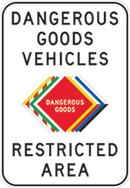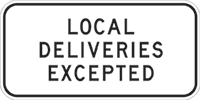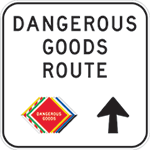Transporting dangerous goods by road
Under the Australian Dangerous Goods Code, a prime contractor and driver of a road vehicle transporting dangerous goods has an obligation to:
- plan safe dangerous goods routes by road
- observe all the requirements/restrictions on selection of routes, or times of travel, as determined by the regulator (Department of Transport and Main Roads).
General principles for safe route selection
- Try to use freeways, highways or other major roads.
- Avoid town centres, central business districts and known congested routes (particularly at times of peak activity).
- Avoid shopping centres, schools and health care facilities during peak hours.
- Avoid residential areas.
- Avoid tunnels.
Select major roads
When transporting dangerous goods it is a good idea to use major roads/corridors as much as possible.
The most appropriate routes for transporting dangerous goods will change from time to time, due to changes in the condition of the road network and roadworks etc.
Avoid heavily populated/congested areas
Avoiding heavily populated or congested areas is particularly applicable when transporting toxic gases, or dangerous goods that may release toxic gases in the event of a spill or a fire.
For the bulk transfer of dangerous goods, especially fuel, avoid congested service stations during peak hours.
Avoid water catchment areas and environmentally sensitive zones
Avoid routes that pass through surface water catchment areas. Public drinking water source areas and environmentally sensitive areas may be particularly vulnerable to vehicles carrying toxic Division 6.1 or Class 9 dangerous goods.
Avoid underground water protection areas, water catchment areas for potable water and sensitive environmental zones.
Avoid tunnels and restricted routes
When planning dangerous goods routes, tunnels or others sensitive road infrastructure should be avoided.
Placard loads of dangerous goods (including explosives) must not be driven through tunnels where a Placard Load Prohibited Sign exists – penalties apply.
Observe relevant road signs
These special road signs mark the preferred routes and guide dangerous goods drivers around Brisbane.



Transporting dangerous goods by road in the Metropolitan Brisbane Area
Read the Transport of dangerous goods by roads restrictions flyer for key principles/considerations in designing and maintaining safe dangerous goods routes in the Metropolitan Brisbane Area.
Dangerous goods vehicle drivers should only depart from these routes to make local deliveries.